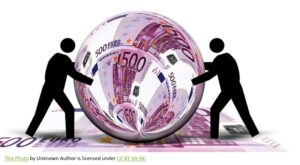 In earlier installments of our Partner-Ready blog series, we discussed the importance of a repeatable sales model and a repeatable delivery model. Both of these elements are relevant to partner economics. In other words, how do your partners make money?
In earlier installments of our Partner-Ready blog series, we discussed the importance of a repeatable sales model and a repeatable delivery model. Both of these elements are relevant to partner economics. In other words, how do your partners make money?
One has to assume your potential partners are good business people and will be weighing their options of who to partner with against how they make money, where can they create new revenue streams, and what fits their business model.
In the heyday of channel resale, a good margin was all it took to ensure a good revenue stream and profitability. Often vendors would augment margin with incentives and cost offsets such as rebates, free training, or marketing funds.
Think multipliers not margins
Today, and in particular around a SaaS model, it takes a different line of thinking. It’s a shift from thinking margins to thinking #multipliers. Why is that? Well, an example is the Microsoft partner model. Microsoft actively promotes that partners are realizing over $8 of service revenue for every $1 of the software license.
Salesforce reports that for every $1 of software license, systems integrators are seeing $3-6 dollars. These multipliers are strong motivators for partners to recommend #Salesforce because of the service revenue it drives.
When it comes to discounts and incentives on the resale a partner can’t get anywhere near the revenue or profit reselling software that they can with services. Let’s assume that resale margin, incentives, rebates, and cost reimbursements add up to 40% on the software sale. At the end of the day, a partner will make 40 cents on the dollar. If the same partner has a service multiple of 7 dollars and a reasonable service margin say of 45% that translates to $3 of profit on the same dollar of license revenue. $.40 vs $3.00. Pretty compelling where the partner should invest, isn’t it?
For a software vendor that means you can discount all day and you will still have a limited impact on partner profitability. Don’t get me wrong partners still want that margin but the software becomes the razor, not the blades. It is also attractive to partners to maintain a resale relationship to maintain the customer relationship.
Design the ecosystem around customer value
It also means that as you design your ecosystem, you need to design around the new paradigm for partner profitability. It is no longer a focus on subsidizing partner profitability through rebates or discounts. There is a clear shift to reward and incentivize those things that customers value. What customers are buying from your partners is expertise, a compelling customer experience, and business outcomes. All of which is delivered through services and to add another wrinkle complementary IP i.e. more software.
Partners who can add proprietary intellectual property through software extensions, accelerators, and connectors can gain additional revenue and margin. Software, once developed, is pure profit and is a platform for more services. It also differentiates the partner in the value it can provide to their customers.
Software companies need to decide early in their operations, how much of the services they plan to deliver around their software. The long-term profitability for the developer is going to be in selling software not services. But in the early stages, the developer might be obliged to provide services to support the customer’s successful use and benefit of the product.
What does this all mean from SaaS provider perspective?
1. Provide a competitive margin on resale, if you decide to adopt a resale business model and be sure to consider the full partner economic model beyond margins.
2. Recognize where the profitable services are in the customer journey. It may be in the presale stage when partners are advising clients on digital transformation strategies. In this case, you need to be able to strongly position your product in the solution stack.
3. There are also service revenue streams in the configuration, implementation, and onboarding stages. How do you equip your partners to be successful and profitable through these stages?
4. Post-sales, partners are seeking to provide managed services or ongoing training and advice related to your product. These partners are key to your retention strategy. A happy customer will continue to subscribe and will be open to up-sell and cross-sell opportunities to grow your recurring revenue.
5. Invest and maintain an API strategy. Being able to extend and customize your product enables partners to create more value for targeted customers, enabling differentiated offerings. This will result in better partner profitability, more successful customers, and extended market reach for you.
Understanding partner economics is at the heart of orchestrating a successful ecosystem. Partners do not make money the same way; do not serve your joint customers the same way, and need different support from you to be successful.



